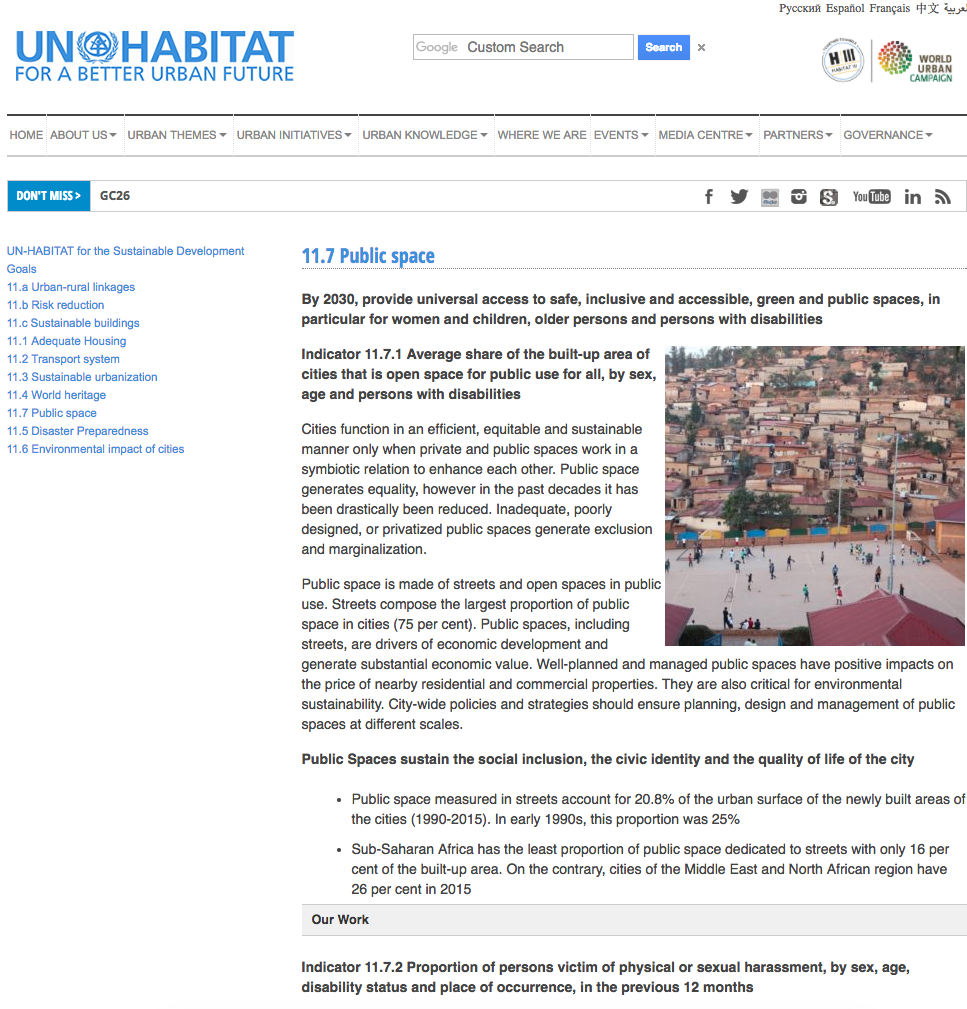Resource information
Cities function in an efficient, equitable and sustainable manner only when private and public spaces work in a symbiotic relation to enhance each other. Public space generates equality, however in the past decades it has been drastically been reduced. Inadequate, poorly designed, or privatized public spaces generate exclusion and marginalization.
Public space is made of streets and open spaces in public use. Streets compose the largest proportion of public space in cities (75 per cent). Public spaces, including streets, are drivers of economic development and generate substantial economic value. Well-planned and managed public spaces have positive impacts on the price of nearby residential and commercial properties. They are also critical for environmental sustainability. City-wide policies and strategies should ensure planning, design and management of public spaces at different scales.

